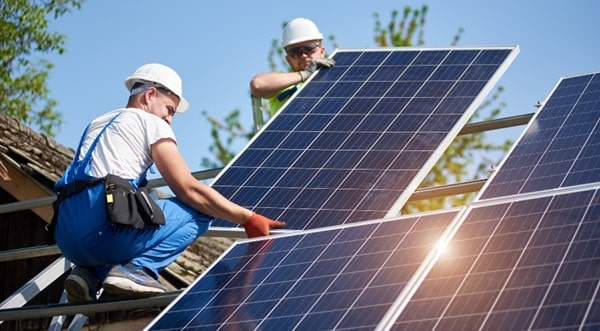If you have ever wondered if solar panel systems and the electric grid system can coexist, then the answer is yes.
It’s possible due to the introduction of an integration system between both concepts. To put it simply, technological advancements have been made such that you can combine solar energy with the electric grid.
And by doing so, it remains possible to maintain grid efficiency, reliability, and sustainability.
The Electric Grid and Solar Energy
For many years, society has relied on the sole capacity of the electric grid for power generation and distribution across the many buildings in the UK. It was also the electric grid system that determined the level of output and efficiency afforded to any power system. The energy system was majorly a centralised one, but recently, there have been localisations.
Those localisations of energy generation are, in part, due to the advent of solar panels alongside other variable forms of energy, including turbine and hydroelectric power. But today’s focus is on the integration of solar panels with the existing electric grid systems.
The Roles of Solar Companies in Energy Integration
Solar companies like Solar Co have also contributed to the development of power integration; how? That’s simply thanks to the role they play in distributing energy resources across the area. For instance, while modern power grids are more central and larger, these solar companies distribute smaller grids, or solar panels, making them accessible.
So, it’s accurate to conclude that these companies have brought the electric grid closer to everyone and all buildings in need, which by the way, is the key purpose of solar panel integration with existing electric systems.
Transmission and Distribution of the Electric Grid System
Another way to understand how solar panels are integrated with existing electric systems is to compare how they perform transmission and distribution functions.
For the power grid, the role of transmission is based on using high-voltage lines to collect electricity from large power plants, which is then distributed across long distances. In that same vein, solar panels have been designed to collect solar energy from the source – the sun – and distribute it across the photovoltaic cells that convert it to electricity for use in the household.
Distribution grids involve low-voltage lines that allow distribution across businesses and homes. Transformers and substations are also useful for switching the power between high and low voltages.
The Simple But Effective Impact of Solar Panels on Electrical Systems
Usually, the transmission and distribution of electricity is seen as a one-way journey from the power grid to the consumer. However, since the integration of solar panels, this process has become more dynamic as part of the electricity generated by the panels is sent to the grid.
That has made the generation of electricity by panels a favourable innovation for both parties. The power grid benefits from the extra electricity supplied by solar panels while solar panel owners receive incentives for supplying the grid with power.
In the end, the integration of solar panels with already existing power grid systems has been an easy and smooth process. It’s a step that promises huge boosts in energy efficiency as well as reduced toxic effects in the form of carbon emissions.


